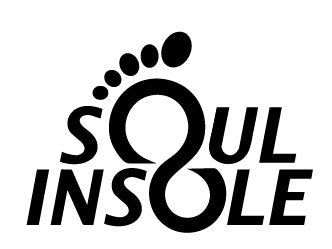
Common Questions About Shoe Insoles — Answered Clearly
Your complete guide from the comfort specialists at Soul Insole
When shoppers start looking for shoe insoles, they tend to search the same questions over and over — usually because choosing the right insole can feel confusing. This guide answers the internet’s most-asked questions with clarity, so you can confidently choose the best insole for your feet, lifestyle, and shoes.
1. What type of insole do I need?
Short answer: It depends on your foot shape, activity level, and whether you need pain relief or comfort.
Types of insoles:
-
Cushioning insoles: Soft, shock-absorbing. Best for comfort.
-
Arch-support insoles: Help with alignment, balance, plantar fasciitis, and overpronation.
-
Hard Orthotic insoles: Rigid and more corrective, designed to firmly hold your foot in alignment like a cast.
-
Heel cups or metatarsal pads: Target specific pain areas in the heels or ball of foot region.
Soul Insole Tip: Our instant custom soft orthotic design provides arch support and cushioning in your shoe — perfect for both comfort and pain relief.
2. How do I know my arch type or foot type?
Your arch height affects how your foot absorbs impact.
How to check:
The Wet Foot Test:
-
Wet the bottom of your foot.
-
Step onto a piece of cardboard.
-
Observe the footprint.
Foot types:
-
Flat/low arch: Full footprint, no gap for arch → needs more structured support.
-
Medium/neutral arch: Partial footprint, small gap for arch → flexible support works best.
-
High arch: Footprint shows heel and toes with big gap for arch → extra cushioning + gentle arch support.
If your feet get tired easily or you roll inward/outward when walking, supportive inserts and heel wedges can help correct this.
3. What material is best for insoles?
Materials determine comfort, durability, and how the insole feels inside your shoe.
Common materials:
-
Gel: Great shock absorption; maintains shape; very comfortable.
-
Memory foam: Soft cushioning but can compress over time.
-
EVA foam: Lightweight and supportive; can compress quickly; good for sports.
-
Polyurethane: More durable; cushions and supports.
-
Cork: More firm support; molds to your foot over time.
Soul Insole uses premium, medical-grade materials designed for long-term wear without flattening out.
4. Will the insole fit in my shoes?
Most insoles can be trimmed, but thickness matters.
Fit checklist:
-
Check if your shoe has removable factory insoles.
-
Low-volume shoes (dress shoes, cleats, ballet flats) need thin insoles.
-
Running shoes and boots can sometimes accommodate thicker insoles.
Soul Insole designs are low-profile, so they slip into almost any shoe without requiring extra space.
5. How much support do I really need?
Support depends on your gait and pain level.
-
Plantar fasciitis / heel pain: Maximum arch support.
-
Overpronation: Maximum arch support with posting to stabilize the arch.
-
Supination: Cushioning + gentle support + posting / heel wedge on lateral side.
-
General fatigue: Soft inserts with support.
If your feet collapse inward while walking or standing, a more structured support will help reduce strain.
6. How long do insoles last?
Most insoles last 6–12 months depending on use and composition.
Signs you need to replace them:
-
Flattened or compressed spots
-
Cracking or peeling
-
Loss of support or cushioning
-
Foot pain returning
High-quality orthotics can last longer, especially when rotated between shoes.
7. Do I need to break in my new insoles?
Yes — especially if they offer structured arch support.
Break-in guide:
-
Start with 1 hour the first day.
-
Add an hour daily.
-
Within a week or two, they should feel natural.
With Soul Insole’s flexible micro-orthotic design, most customers adjust within one to three days.
8. Are over-the-counter insoles good enough, or do I need custom orthotics?
For many people, high-quality OTC insoles offer the same relief as expensive custom orthotics — at a fraction of the cost.
Choose custom orthotics if you have:
-
Severe biomechanical issues
-
Recent foot surgery
-
Very rigid structural deformities
For everyday pain, alignment, or comfort, OTC is typically the better value and just as effective.
9. Can insoles help with knee, hip, or back pain?
Absolutely. Foot alignment affects your entire posture.
Correcting the foot’s position helps reduce stress on:
-
Knees
-
Hips
-
Lower back
-
Even shoulders (in some cases)
If your pain worsens during walking or standing, supportive insoles are often a major relief.
10. How do I clean and maintain my insoles?
-
Wipe with a dish soap and warm water.
-
Air-dry completely (avoid direct heat).
-
Sprinkle baking soda overnight for odor control.
-
Avoid machine washing unless the insoles are specifically designed for it.
- Use a foot deodorizing spray
Proper care can double their lifespan.
11. Can I move my insoles between different shoes?
Yes — most insoles are designed to be transferable.
Good candidates for swapping:
-
Running shoes
-
Work shoes
-
Casual sneakers
-
Boots
Not ideal: Tight dress shoes or low-profile flats (unless using slim inserts like Soul Insole’s Shoe Bubble micro-orthotics).
12. Are insoles actually worth it?
If you deal with foot pain, tired legs, joint discomfort, or long days on your feet, the answer is almost always yes.
Benefits include:
-
Better alignment
-
Reduced strain on arches and heels
-
More comfort for long walking or standing
-
Enhanced performance for athletes
-
Prevention of overuse injuries
A high-quality insole can make an inexpensive shoe feel premium.
13. What are the most common mistakes when buying insoles?
Avoid these common errors:
❌ Choosing the wrong arch height
❌ Picking insoles that are too thick for the shoe
❌ Expecting instant relief without a break-in period
❌ Buying only based on softness
❌ Ignoring over supination
Most insoles are designed for over pronation, so an over supinator may be pushed more to the outside with a standard arch support orthotic - supination needs lateral posting.
The right insole should improve alignment without feeling intrusive.
14. Which brands should I consider?
Look for brands that focus on foot health, medical-grade materials, and ergonomic design.
At Soul Insole, we create premium, low-profile orthotic solutions that:
✔ relieve pain
✔ improve balance
✔ fit almost any shoe
✔ last significantly longer than typical foam or gel inserts
Our products are designed for people who want professional-level support without bulky orthotics.
Final Thoughts
Buying the right insole shouldn’t be confusing. By understanding your foot type, support needs, and shoe fit, you can choose a pair that brings immediate comfort — and long-term relief.
If you want an insole that’s supportive, slim, durable, and comfortable enough for daily wear, explore Soul Insole’s shoe insole solutions.
Reach out to us if you would like personalized guidance for your feet. We would love to help you find the right solution to your foot needs. Contact Us Here
Written by Soul Insole


